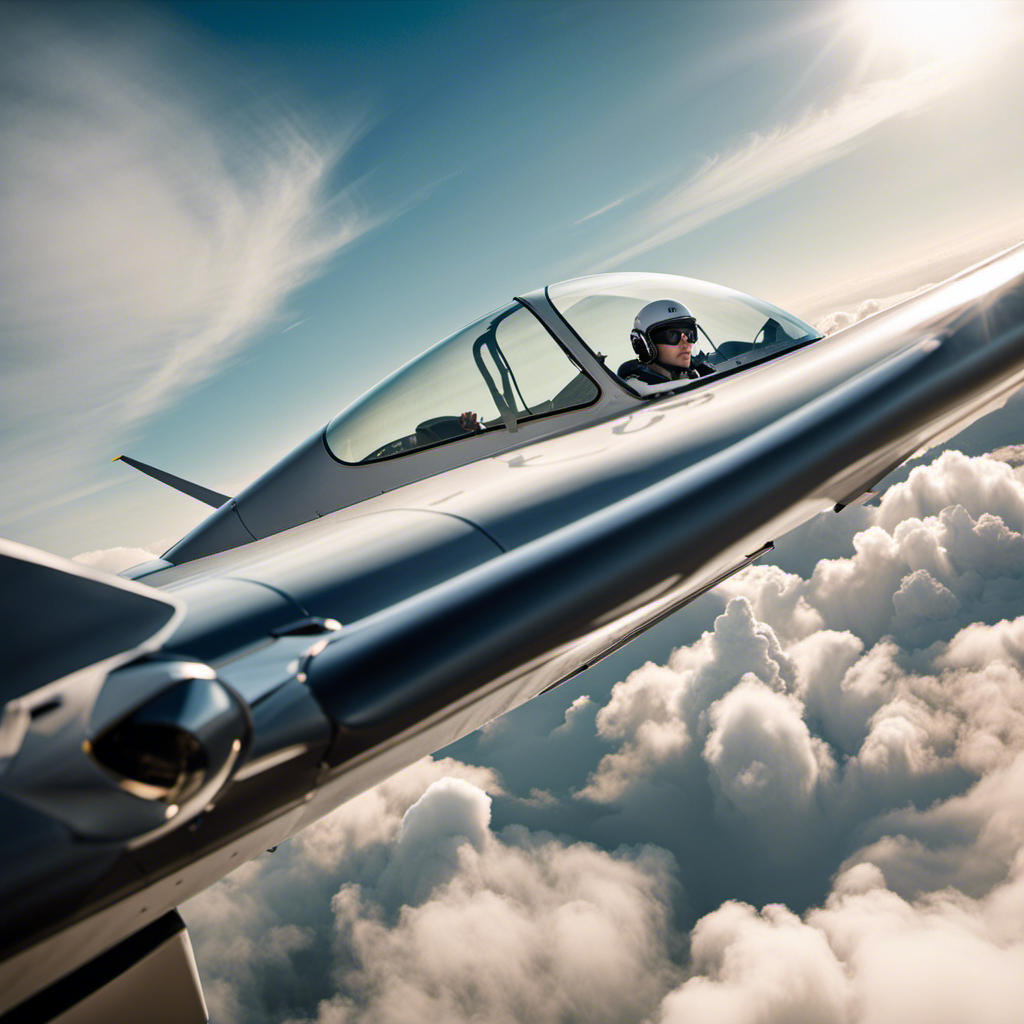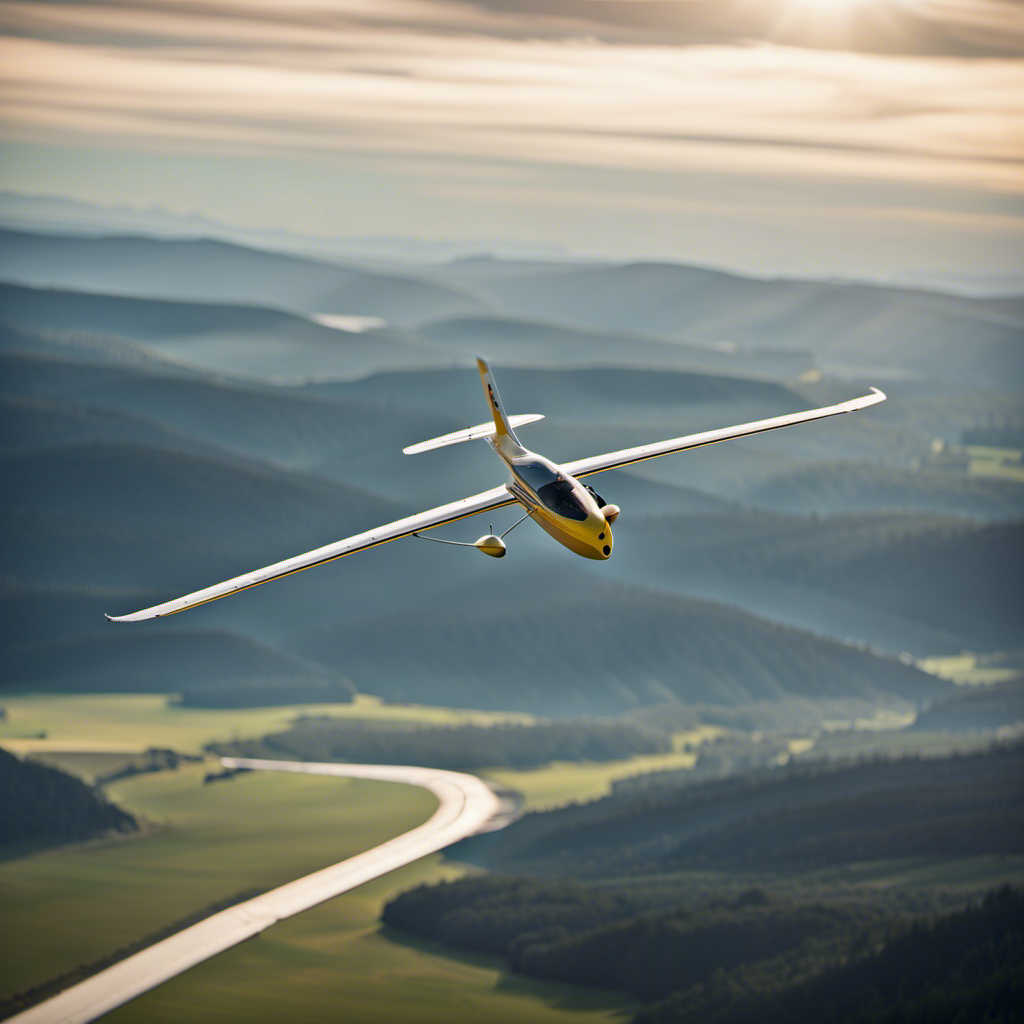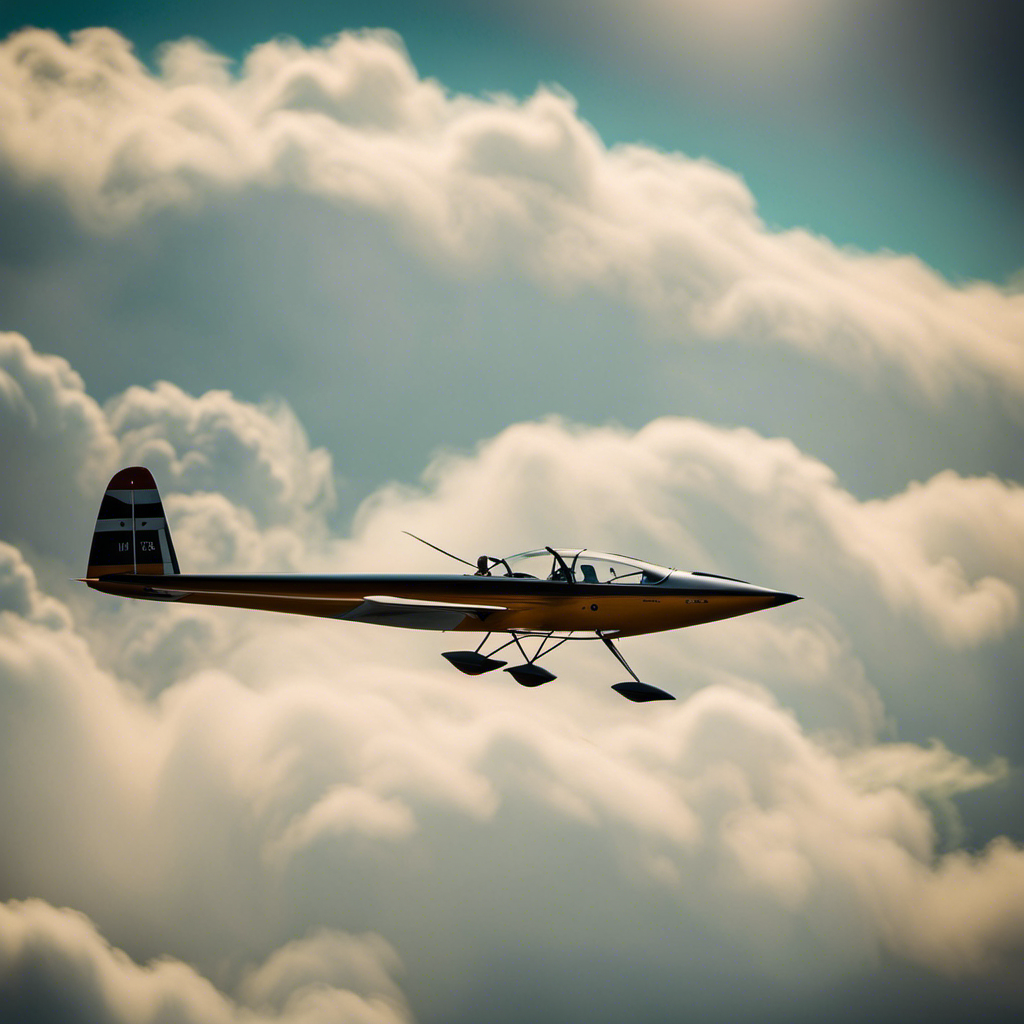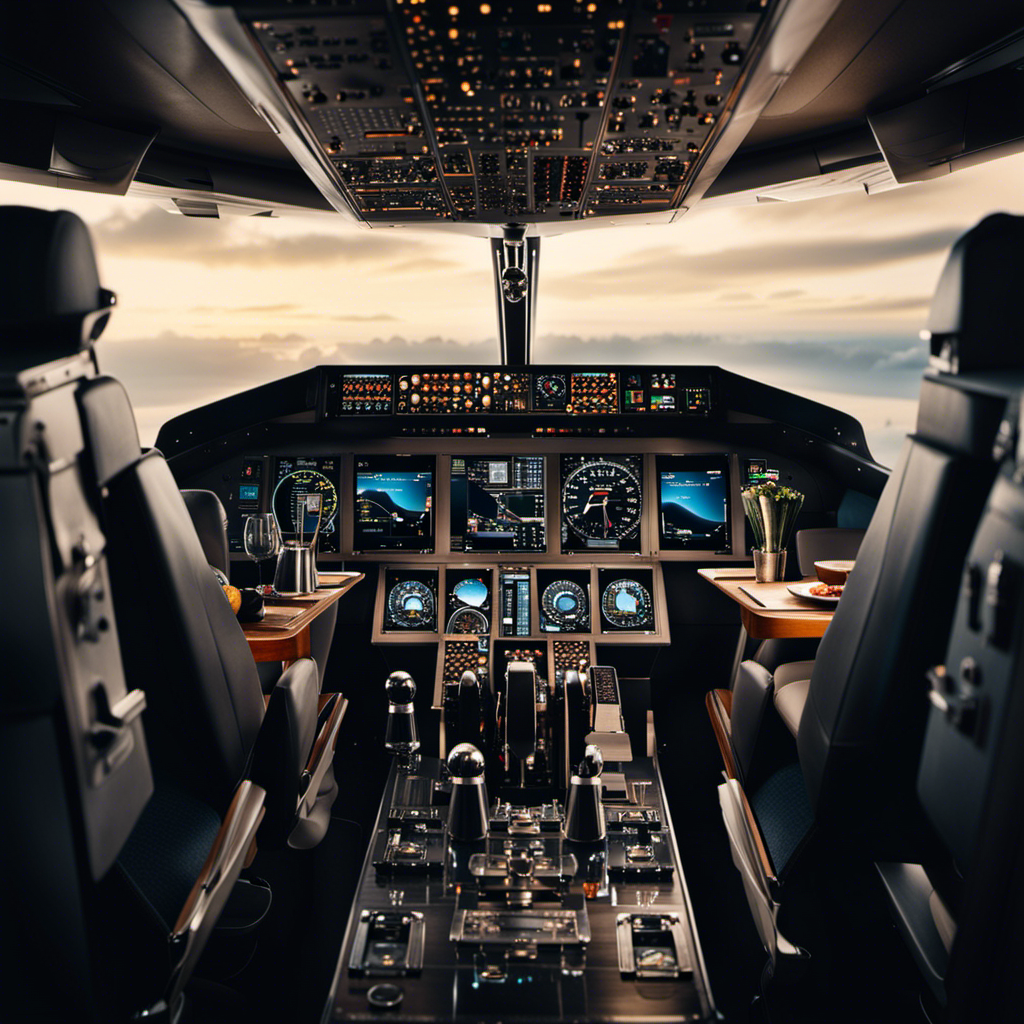I still remember that moment vividly – the thrill, the feeling of weightlessness as the wheels left the ground. It was the day I officially became a pilot.
But when can one officially call oneself a pilot? In this article, I will guide you through the requirements, training process, and exams necessary to obtain your first license.
So buckle up, because the sky is waiting, and it’s time to embrace your pilot status.
Key Takeaways
- There are different types of pilot licenses, including student pilot license, private pilot license, commercial pilot license, and airline transport pilot license.
- The minimum age for a student pilot license is 16 years old, while a private pilot license requires a minimum age of 17 years old.
- Flight training includes ground school, flight simulator training, solo and dual flight training, and passing written and practical exams.
- Logging flight hours and gaining experience through solo flights, cross-country flights, night and instrument flights are important for building proficiency and confidence as a pilot.
The Requirements for Obtaining a Pilot License
To obtain a pilot license, you’ll need to meet certain requirements and undergo extensive training. Firstly, let’s talk about the cost.
The pilot license cost varies depending on the type of license you’re pursuing and the flight school you choose. Generally, it includes fees for flight hours, ground school, exams, and medical certificates. On average, it can range from $8,000 to $15,000.
Now, let’s discuss the age requirements. In most countries, you must be at least 16 years old to obtain a student pilot license, which allows you to fly solo under the supervision of an instructor. To get a private pilot license, you must be 17 years old. These age requirements ensure that aspiring pilots have the maturity and responsibility necessary for safe flying.
Moving forward, let’s explore the different types of pilot licenses.
The Different Types of Pilot Licenses
There are various types of licenses for pilots, each offering different career opportunities and advantages. Here is a comparison of the three main types of pilot licenses:
| License Type | Description | Advantages |
|---|---|---|
| Private Pilot | Allows flying for personal purposes | Flexibility, lower cost, ability to own aircraft |
| Commercial Pilot | Allows flying for compensation or hire | Career advancement, potential higher salary |
| Airline Transport Pilot | Highest level of pilot license | Eligibility to fly for major airlines, command positions, increased earning potential |
The Training Process
When it comes to becoming a pilot, there are several key points to consider during the training process.
First, ground school and classroom instruction provide the foundational knowledge needed to understand the principles of flight, navigation, and aircraft systems.
Next, flight simulator training allows pilots to practice their skills in a realistic, simulated environment.
Ground School and Classroom Instruction
I’m really enjoying the classroom instruction during ground school. It’s fascinating to dive deep into the flight school curriculum and learn about the essential principles of aviation theory. Here are four reasons why I find this part of the training process so valuable:
-
Comprehensive Content: The curriculum covers a wide range of topics, including aerodynamics, meteorology, navigation, and aircraft systems. This knowledge lays the foundation for a successful career in aviation.
-
Expert Instructors: The instructors are highly knowledgeable and experienced pilots themselves. They provide valuable insights and guidance, ensuring that we grasp the concepts effectively.
-
Interactive Discussions: The classroom sessions encourage active participation and discussion among students. We get to learn from each other’s perspectives and experiences, enhancing our understanding of the material.
-
Real-World Applications: The lessons often include practical examples and case studies, illustrating how the theories we learn in the classroom are applied in real-life flying scenarios.
Now, let’s transition to the next section about flight simulator training, where we get to put our theoretical knowledge into practice.
Flight Simulator Training
Flight simulator training provides a realistic and immersive environment for pilots to practice their skills and apply the theoretical knowledge they have learned in ground school. This type of training offers practical benefits and real-world applications that help pilots become proficient in handling various flight scenarios.
In a flight simulator, pilots can simulate different weather conditions, emergency situations, and even practice landing at challenging airports. The use of advanced technology and highly detailed graphics in flight simulators allows pilots to feel as if they are flying an actual aircraft.
This type of training is not only cost-effective but also time-efficient, as pilots can repeat maneuvers and procedures as many times as needed. With the skills acquired through flight simulator training, pilots can then move on to the next stage of their training, which involves solo and dual flight training.
Solo and Dual Flight Training
During this stage of training, it’s important to focus on building your confidence and honing your skills through solo and dual flight training. This is the time when you start taking control of the aircraft and learn to fly on your own.
Here are four key aspects to consider during this phase:
-
Flight instructor qualifications: Make sure your flight instructor is properly certified and experienced to provide you with the best guidance and instruction.
-
Aircraft maintenance requirements: Understand the importance of proper aircraft maintenance and ensure that the aircraft you are flying is in good condition and meets all safety standards.
-
Solo flights: Take advantage of solo flights to practice and reinforce what you have learned. This is an opportunity to become more comfortable and independent in the cockpit.
-
Dual flight training: Continue dual flight training sessions with your instructor to receive feedback, improve your skills, and learn advanced maneuvers.
As you progress through solo and dual flight training, you will soon be ready to move on to the next step of passing the written and practical exams.
Passing the Written and Practical Exams
Passing the written and practical exams is a requirement in order to officially become a pilot. These exams are designed to assess your knowledge and skills in various aspects of aviation, such as navigation, weather, aerodynamics, and aircraft systems.
The written exam typically consists of multiple-choice questions, while the practical exam includes a flight test with an examiner. It is crucial to prepare thoroughly for these exams, as they determine your eligibility to obtain a pilot’s license.
Having a knowledgeable and experienced flight instructor is invaluable during this process. They can guide you through the necessary study materials, provide hands-on training, and help you practice the required maneuvers.
Once you have successfully passed these exams, you can move on to the next phase of your pilot journey: logging flight hours and building experience.
Logging Flight Hours and Building Experience
When it comes to logging flight hours and building experience as a pilot, there are several key points to consider.
First, solo flight hours are an essential milestone in a pilot’s training, as they demonstrate the ability to safely operate an aircraft without an instructor.
Additionally, cross-country flights provide valuable experience in navigation and planning, allowing pilots to gain confidence in their ability to fly longer distances.
Lastly, night and instrument flight hours are important for developing skills in challenging conditions, ensuring that pilots can safely navigate and operate an aircraft even when visibility is limited or when relying solely on instruments.
Solo Flight Hours
To become a pilot, you can officially call yourself a pilot once you’ve logged enough solo flight hours. Solo flight hours are a crucial milestone in a pilot’s journey, as they signify the transition from being a student pilot to a confident aviator. During these hours, pilots build confidence in their abilities and overcome any fear or apprehension they may have had. It is a time for pilots to put into practice all they have learned, making decisions and maneuvering the aircraft on their own.
During the solo flight hours, pilots focus on three key areas:
- Mastering fundamental skills: Pilots practice takeoffs, landings, and various maneuvers to ensure they have a solid foundation of flight skills.
- Navigating different weather conditions: Pilots learn to fly in different weather conditions, improving their ability to make informed decisions and adapt to changing situations.
- Developing situational awareness: Pilots learn to anticipate potential challenges and make quick, accurate judgments to maintain safety.
Once pilots have gained confidence and proficiency through solo flight hours, they are ready to embark on another exciting phase of their journey: cross-country flights. These flights allow pilots to explore new destinations, navigate longer distances, and experience the thrill of flying in different environments, ultimately broadening their horizons as aviators.
Cross-Country Flights
During cross-country flights, you’ll have the opportunity to explore new destinations and navigate longer distances, expanding your flying experience. As a pilot, mastering navigation techniques is crucial in order to safely reach your intended destination. This involves using instruments, charts, and landmarks to determine your position and plan your route.
Weather considerations are also essential for a successful cross-country flight. Understanding how to interpret weather reports and forecasts helps you make informed decisions about when and where to fly. Being aware of weather patterns, such as wind direction and speed, cloud formations, and changes in visibility, allows you to adjust your flight plan accordingly.
These skills and knowledge gained from cross-country flights provide a solid foundation for the next section: night and instrument flight hours, where I will further enhance my piloting abilities.
Night and Instrument Flight Hours
As I gain experience during night and instrument flight hours, I become more skilled at navigating using only instruments and relying on my training to safely fly in low visibility conditions. This part of my training is crucial for obtaining my instrument rating, which allows me to fly in conditions where visibility is limited.
Here are some important points to consider during night flight training and instrument rating:
- Familiarize myself with the instruments and their functions to confidently rely on them.
- Develop the ability to interpret instrument readings accurately and quickly.
- Practice precise instrument approaches and landings to ensure a safe arrival.
Meeting the Additional Requirements
Once you’ve met the additional requirements, you can officially call yourself a pilot. Meeting the flight requirements is a crucial step in obtaining your pilot license.
To maintain pilot currency, you must accumulate a specified number of flight hours, both as pilot-in-command and as a co-pilot. These flight hours are divided into various categories, such as cross-country flights, night flights, and instrument flights. The specific requirements vary depending on the type of license you are pursuing.
For example, to become a private pilot, you need to complete a minimum of 40 hours of flight time, including 20 hours of flight instruction and 10 hours of solo flight. By fulfilling these flight requirements, you demonstrate your proficiency and readiness for the responsibilities of being a pilot.
Now that you have met these requirements, it’s time to move forward and apply for your pilot license, which involves a series of additional steps.
Applying for the Pilot License
Now that you’ve met the additional requirements, it’s time to start the process of applying for your pilot license. The pilot license application process involves several steps that need to be completed accurately and thoroughly.
First, you will need to gather all the necessary documentation, such as your logbook, medical certificate, and proof of training. It is essential to carefully review the application form and ensure that all the required information is provided. Additionally, make sure to pay attention to any specific instructions or additional forms that may be required by your aviation authority.
To increase your chances of a successful pilot license application, it is recommended to double-check all the information, seek guidance from experienced pilots or flight instructors, and submit your application well before any deadlines. Once your application is approved, you will be one step closer to becoming a licensed pilot.
After receiving your pilot license, you’ll be able to officially call yourself a pilot and start enjoying the privileges that come with it.
After Receiving Your Pilot License
After receiving my pilot license, I quickly realized that there was still so much more to learn and achieve in the aviation field. Continuing education and training became a top priority for me, as I wanted to stay up-to-date with the latest industry practices and advancements.
Additionally, I found great value in joining aviation organizations and associations, as they provided valuable networking opportunities and access to resources that further enhanced my skills and knowledge.
Lastly, pursuing advanced ratings and certifications allowed me to expand my capabilities as a pilot and opened doors to new opportunities within the aviation industry.
Continuing Education and Training
To stay current as a pilot, I must regularly engage in continuing education and training. As aviation technology and regulations evolve, it is crucial to update my knowledge and skills. Professional development opportunities allow me to enhance my proficiency and stay up-to-date with the latest industry standards. This ongoing education not only ensures my safety but also improves the overall quality of my performance as a pilot. It allows me to expand my knowledge in areas such as aviation safety, navigation systems, weather patterns, and emergency procedures. By continuously learning and improving, I can provide a higher level of service to my passengers and maintain a strong professional reputation. This commitment to continuing education is an essential part of being a responsible and competent pilot.
| Continuing Education and Training |
|---|
| Aviation Safety |
| Navigation Systems |
| Weather Patterns |
| Emergency Procedures |
To further enhance my involvement in the aviation community, joining aviation organizations and associations provides numerous benefits.
Joining Aviation Organizations and Associations
Joining aviation organizations and associations can provide pilots with numerous benefits. Firstly, it offers networking opportunities and access to industry resources. By becoming a member of aviation clubs, pilots can connect with like-minded individuals and build a strong professional network. This can open doors to potential job opportunities, collaborations, and mentorship programs.
Secondly, being part of these organizations allows pilots to stay updated with the latest industry trends, advancements, and regulations. This is crucial for maintaining a competitive edge and staying informed about changes that may affect their careers.
Additionally, many aviation associations offer career guidance and mentorship programs. These programs provide valuable support and advice to pilots at different stages of their careers. Whether it’s receiving guidance on navigating the job market or getting advice on pursuing advanced ratings and certifications, these organizations can be invaluable resources.
Transitioning into the next section, pilots can further enhance their skills and expertise by pursuing advanced ratings and certifications. These additional qualifications can expand their career opportunities and make them more marketable in the industry.
Pursuing Advanced Ratings and Certifications
Once you have obtained your private pilot license, it’s time to consider pursuing advanced ratings and certifications to further expand your skills and knowledge in aviation.
Advanced flight training and specialized pilot certifications can open up new opportunities and enhance your abilities as a pilot.
One option is to pursue an instrument rating, which allows you to fly in less-than-ideal weather conditions using only the aircraft’s instruments. This rating can greatly increase your versatility and safety as a pilot.
Another option is to pursue commercial pilot certification, which allows you to fly for hire and opens up career possibilities in aviation.
Additionally, you may choose to pursue certifications in specific aircraft types or specialized areas such as aerobatics or flight instruction.
These advanced ratings and certifications demonstrate your commitment to excellence and can set you apart in the aviation industry.
As you consider these options, it’s important to remember that maintaining your pilot license requires ongoing training and proficiency evaluations.
Maintaining Your Pilot License
Maintaining my pilot license requires me to stay up-to-date with various requirements and certifications.
Firstly, I must undergo regular medical examinations to ensure that I’m physically fit to fly.
Additionally, I need to complete flight reviews to demonstrate my proficiency and currency in flying skills.
Lastly, staying up-to-date with aviation regulations is crucial to ensure that I’m operating within the legal framework and maintaining the highest level of safety in my flying endeavors.
Medical Examinations and Certifications
Before you can officially call yourself a pilot, you’ll need to pass the necessary medical examinations and receive the required certifications. The importance of mental health in aviation cannot be overstated. It is crucial for pilots to be mentally fit to handle the demands of flying, as any lapse in judgment or decision-making can have serious consequences. Common medical conditions that may disqualify a pilot include uncontrolled epilepsy, certain psychiatric disorders, and severe hearing or vision impairments. It is essential to undergo regular medical check-ups to ensure that you meet the necessary health standards to maintain your pilot license. These examinations assess not only physical health but also mental well-being. As a pilot, your mental health is just as important as your physical health in ensuring safe and efficient operations. Ensuring that you are medically fit to fly is the first step towards becoming a licensed pilot.
Transition: Once you have passed the medical examinations and received your certifications, the next aspect to consider is flight reviews and currency requirements.
Flight Reviews and Currency Requirements
After passing the medical examinations and receiving the required certifications, it’s important to stay current with flight reviews and meet currency requirements.
Flight reviews, also known as a biennial flight review (BFR), are essential for maintaining proficiency and ensuring the safety of yourself and others in the skies. These reviews consist of an evaluation of your flight skills, knowledge, and adherence to regulations.
Additionally, maintaining currency involves meeting specific requirements such as flight hours, night landings, and instrument approaches. These requirements vary depending on the type of pilot certificate you hold.
Staying current with flight reviews and meeting currency requirements is crucial for maintaining the skills and knowledge necessary to safely operate an aircraft. By doing so, pilots can ensure they are always prepared for the challenges and responsibilities of flying.
This dedication to proficiency seamlessly transitions into the next topic of staying up-to-date with aviation regulations.
Staying Up-to-Date with Aviation Regulations
To stay up-to-date with aviation regulations, it’s important for pilots to regularly review and familiarize themselves with the latest guidelines and requirements. This ensures regulatory compliance and a safe operating environment. Here are three key reasons why ongoing education and training are vital:
-
Regulatory updates and compliance: Aviation regulations are constantly evolving, with new rules and requirements being introduced regularly. Staying informed about these changes is crucial to ensure that pilots are operating within the legal framework and maintaining safety standards.
-
Safety enhancement: Ongoing education and training allow pilots to enhance their knowledge and skills, enabling them to handle challenging situations confidently and efficiently. By staying current with regulations, pilots can mitigate risks and make informed decisions that prioritize safety.
-
Professional development: Embracing ongoing education and training showcases a commitment to professionalism and continuous improvement. It demonstrates a pilot’s dedication to maintaining high standards and staying at the forefront of the aviation industry.
Celebrating and Embracing Your Pilot Status
Once you pass the final exam and receive your pilot’s license, you can start celebrating and fully embrace your new status as a pilot.
Beyond the joy of flying, being a pilot brings many benefits outside of the cockpit. Firstly, it opens up a world of travel opportunities, allowing you to explore new places and experience different cultures.
Additionally, being a pilot often comes with a sense of pride and accomplishment, as you have achieved a significant milestone in your career.
However, being a new pilot also comes with its fair share of challenges. Some common hurdles include building flight hours, finding job opportunities, and staying current with aviation regulations.
To overcome these challenges, it’s important to network with other pilots, stay proactive in your job search, and stay updated with regulatory changes through continuous learning and training.
Frequently Asked Questions
How long does it take to obtain a pilot license?
Obtaining a pilot license can take anywhere from a few months to a year, depending on the individual and their commitment. The duration is influenced by factors such as training frequency, meeting the required flight hours, passing exams, and fulfilling the pilot license requirements.
Can I become a pilot if I wear glasses or contact lenses?
Yes, you can become a pilot if you wear glasses or contact lenses. However, there are specific vision requirements that must be met, such as having correctable vision to 20/20 or better.
Are there any age restrictions for obtaining a pilot license?
To obtain a pilot license, age restrictions exist. However, it is important to note that the specific age requirements vary depending on the type of license being pursued.
Can I use my pilot license from one country to fly in another country?
Yes, you can use your pilot license from one country to fly in another country through international flying agreements and pilot license reciprocity, which allow licensed pilots to operate aircraft in foreign airspace.
What are the career opportunities for licensed pilots?
Career advancement for licensed pilots is abundant, with opportunities to become airline captains, flight instructors, or corporate pilots. Salary potential is high, with airline pilots earning an average of $115,670 per year.
Conclusion
So there you have it, folks! After jumping through all the hoops, enduring countless hours of training, and passing exams that make your head spin, you can finally call yourself a pilot.
It’s a title that comes with a certain level of prestige and admiration from your friends and family (and maybe a few jealous glares from those who couldn’t quite make the cut).
So go ahead, embrace your pilot status, celebrate your achievement, and remember, the sky is your playground now. Just make sure to keep those seatbelts fastened and your tray tables in their upright position.
Happy flying!
With a heart that soars as high as the skies, Aria, affectionately known as “Skylark,” is the driving force behind Soaring Skyways. Her journey into the gliding world began as a young dreamer gazing up at the soaring birds, yearning to experience the weightlessness and freedom they embodied. With years of experience both in the cockpit and behind the scenes, Aria’s commitment to the gliding community is unwavering.










